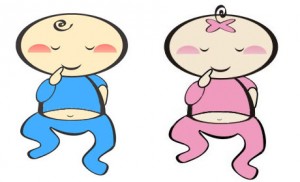Gender Roles: What Do You Teach Your Children
At the Youth Advocacy Institute last month, we did an exercise on how traditional societies force gender identities on children from the minute they are born. Baby boys are swathed in blue, and girls are given pink clothes. As they grow up boys get footballs and cricket bats; girls get dolls, makeover kits and miniature kitchen sets. At puberty, the girl is asked to keep away from boys, and the boy is made fun of if found hanging out with girls. As they grow older, he gets more claim over public space. Her movements are more closely watched. As she grows older, her looks take precedence over her education. He is forced to opt for careers that will bring him a steady salary and earn him a respectable place in society.
 Dr. Manisha Gupte who conducted pointed out just how misogynist these social constructs are. “It is easier for the girl to wear pants than it is for the boy to wear a skirt or play with dolls. Wanting something that is meant for women or young girls is considered derogatory, and a step down for men or young boys. Whereas wanting to dress like a man might be odd for a woman but it never lowers her status in the society.”
Dr. Manisha Gupte who conducted pointed out just how misogynist these social constructs are. “It is easier for the girl to wear pants than it is for the boy to wear a skirt or play with dolls. Wanting something that is meant for women or young girls is considered derogatory, and a step down for men or young boys. Whereas wanting to dress like a man might be odd for a woman but it never lowers her status in the society.”
These gender roles also confine men and women to certain spaces, and vest them with unequal power in these spaces. With more and more women are now working jobs, and “taking over” a space previously reserved for men, there’s an apparent sense of equality. But traditional society still teaches women to negotiate the larger portion of their power through their roles as wives and mothers. Even while playing house as little girls, they are taught to possessively guard these spaces from other women, creating fracture lines in the close bond that can form between adult women.
Popular media for young children is often an agency for perpetrating the angst and jealously that can exist between women in traditional societies. Very often TV shows and advertisements show young women competing for a man’s affections, and contending over wedding apparel, and envying each other’s physical appearance. Several of them also create the “ideal” woman, who is much appreciated by an equally “ideal” man. Very often, the “ideal” woman also put down women with other body-types, lifestyles, dressing styles and ambitions.
But then, media is also the queen of subversion, the art of transforming a social order and its structure of power and authority. So, as the weekend roles in, watch this music video from Kimbra, and ask yourself, what girls learn when they play house.






